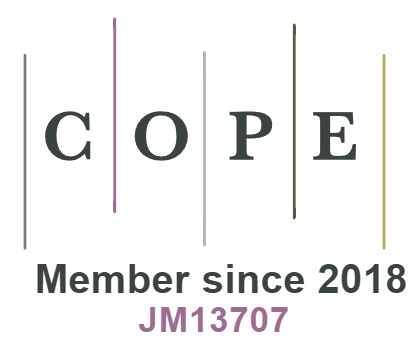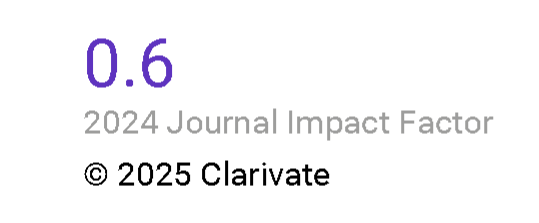Towards a Logic of Value and Disagreement via Imprecise Measures
DOI:
https://doi.org/10.18778/0138-0680.2021.07Keywords:
value, disagreement, truthmaker semantics, hyperintensionalityAbstract
After putting forward a formal account of value disagreement via imprecise measures, I develop a logic of value attribution and of (dis)agreement based on (exact) truthmaker semantics.
References
[1] H. Andréka, M. Ryan, P.-Y. Schobbens, Operators and Laws for Combining Preference Relations, Journal of Logic and Computation, vol. 12(1) (2002), pp. 13–53, DOI: https://doi.org/10.1093/logcom/12.1.13
Google Scholar
DOI: https://doi.org/10.1093/logcom/12.1.13
[2] A. Anglberger, F. L. G. Faroldi, J. Korbmacher, An Exact Truthmaker Semantics for Obligation and Permission, [in:] O. Roy, A. Tamminga, M. Willer (eds.), Deontic Logic and Normative Systems, DEON16, College Publications, London (2016), pp. 16–31.
Google Scholar
[3] R. J. Aumann, Utility Theory without the Completeness Axiom, Econometrica, vol. 30(3) (1962), pp. 445–462, DOI: https://doi.org/10.2307/1909888
Google Scholar
DOI: https://doi.org/10.2307/1909888
[4] F. Berto, D. Nolan, Hyperintensionality, [in:] E. N. Zalta (ed.), The Stanford Encyclopedia of Philosophy, spring 2021 ed., Metaphysics Research Lab, Stanford University (2021).
Google Scholar
[5] R. Chang, Parity, Interval Value, and Choice, Ethics, vol. 115(2) (2005), pp. 331–350, DOI: https://doi.org/10.1086/426307
Google Scholar
DOI: https://doi.org/10.1086/426307
[6] R. Chang, Value Incomparability and Incommensurability, [in:] I. Hirose, J. Olson (eds.), The Oxford Handbook of Value Theory, Oxford University Press (2015), DOI: https://doi.org/10.1093/oxfordhb/9780199959303.013.0012
Google Scholar
DOI: https://doi.org/10.1093/oxfordhb/9780199959303.013.0012
[7] R. Chang, Parity: An Intuitive Case, Ratio, vol. 29(4) (2016), pp. 395–411.
Google Scholar
DOI: https://doi.org/10.1111/rati.12148
[8] C. Constantinescu, Value Incomparability and Indeterminacy, Ethical Theory and Moral Practice, vol. 15(1) (2012), pp. 57–70, DOI: https://doi.org/10.1007/s10677-011-9269-8
Google Scholar
DOI: https://doi.org/10.1007/s10677-011-9269-8
[9] M. J. Cresswell, Hyperintensional Logic, Studia Logica, vol. 34(1) (1975), pp. 25–38, DOI: https://doi.org/10.1007/BF02314421
Google Scholar
DOI: https://doi.org/10.1007/BF02314421
[10] F. Dietrich, C. List, What Matters and How It Matters: A Choice-Theoretic Representation of Moral Theories, The Philosophical Review, (2017), pp. 421–479, DOI: https://doi.org/10.1215/00318108-4173412
Google Scholar
DOI: https://doi.org/10.1215/00318108-4173412
[11] L. Elkin, G. Wheeler, Resolving Peer Disagreements Through Imprecise Probabilities, Nous, vol. LII(2) (2018), pp. 260–278, DOI: https://doi.org/10.1111/nous.12143
Google Scholar
DOI: https://doi.org/10.1111/nous.12143
[12] F. L. G. Faroldi, Modeling Value Disagreement via Imprecise Measures, 2017.
Google Scholar
[13] F. L. G. Faroldi, Hyperintensionality and Normativity, Springer, Dordrecht (2019), DOI: https://doi.org/10.1007%2F978-3-030-03487-0
Google Scholar
[14] K. Fine, Angellic Content, Journal of Philosophical Logic, vol. 45(2) (2016), pp. 199–226, DOI: https://doi.org/10.1007/s10992-015-9371-9
Google Scholar
DOI: https://doi.org/10.1007/s10992-015-9371-9
[15] K. Fine, Truthmaker Semantics, [in:] B. Hale, C. Wright, A. Miller (eds.), A Companion to the Philosophy of Language, 2nd ed., Blackwell, London (2017), pp. 556–577.
Google Scholar
DOI: https://doi.org/10.1002/9781118972090.ch22
[16] J. Gert, Value and Parity, Ethics, vol. 114(3) (2004), pp. 492–510, DOI: https://doi.org/10.1086/381697
Google Scholar
DOI: https://doi.org/10.1086/381697
[17] J. Gert, Parity, Preference and Puzzlement, Theoria, vol. 81(3) (2015), pp. 249–271, DOI: https://doi.org/10.1111/theo.12069
Google Scholar
DOI: https://doi.org/10.1111/theo.12069
[18] C. Hare, Take the Sugar, Analysis, vol. 70(2) (2010), pp. 237–247, DOI: https://doi.org/10.1093/analys/anp174
Google Scholar
DOI: https://doi.org/10.1093/analys/anp174
[19] W. Krysztofiak, Algebraic Models of Mental Number Axes: Part II, Axiomathes, vol. 26(2) (2016), pp. 123–155, DOI: https://doi.org/10.1007/s10516-015-9270-2
Google Scholar
DOI: https://doi.org/10.1007/s10516-015-9270-2
[20] W. Krysztofiak, Representational Structures of Arithmetical Thinking: Part I, Axiomathes, vol. 26(1) (2016), pp. 1–40, DOI: https://doi.org/10.1007/s10516-015-9271-1
Google Scholar
DOI: https://doi.org/10.1007/s10516-015-9271-1
[21] H. Leitgeb, HYPE: A System of Hyperintensional Logic (with an Application to Semantic Paradoxes), Journal of Philosophical Logic, vol. 48(2) (2019), pp. 305–405, DOI: https://doi.org/10.1007/s10992-018-9467-0
Google Scholar
DOI: https://doi.org/10.1007/s10992-018-9467-0
[22] D. McCarthy, K. Mikkola, T. Thomas, Aggregation for General Populations Without Continuity or Completeness, [in:] MPRA Paper No. 80820, University Library of Munich, Germany (2017).
Google Scholar
[23] D. McCarthy, K. Mikkola, T. Thomas, Representation of Strongly Independent Preorders by Sets of Scalar-Valued Functions, [in:] MPRA Paper No. 79284, University Library of Munich, Germany (2017).
Google Scholar
[24] D. McCarthy, K. Mikkola, T. Thomas, Representation of Strongly Independent Preorders by Vector-Valued Functions, [in:] MPRA Paper No. 80806, University Library of Munich, Germany (2017).
Google Scholar
[25] W. Rabinowicz, Value Relations, Theoria, vol. 74(1) (2008), pp. 18–49, DOI: https://doi.org/10.1111/j.1755-2567.2008.00008.x
Google Scholar
DOI: https://doi.org/10.1111/j.1755-2567.2008.00008.x
[26] W. Rabinowicz, I—Wlodek Rabinowicz: Incommensurability and Vagueness, Aristotelian Society Supplementary Volume, vol. 83(1) (2009), pp. 71–94, DOI: https://doi.org/10.1111/j.1467-8349.2009.00173.x
Google Scholar
DOI: https://doi.org/10.1111/j.1467-8349.2009.00173.x
[27] R. Suszko, An essay in the formal theory of extension and of intension, Studia Logica, vol. 20(1) (1967), pp. 7–34, DOI: https://doi.org/10.1007/BF02340023
Google Scholar
DOI: https://doi.org/10.1007/BF02340023
[28] L. S. Temkin, Rethinking the Good: Moral Ideals and the Nature of Practical Reasoning, Oxford Ethics, Oxford University Press (2012), DOI: https://doi.org/10.1093/acprof:oso/9780199759446.001.0001
Google Scholar
DOI: https://doi.org/10.1093/acprof:oso/9780199759446.001.0001
[29] V. Torra, Y. Narukawa, M. Sugeno (eds.), Non-Additive Measures. Theory and Applications, Springer (2014), DOI: https://doi.org/10.1007/978-3-319-03155-2
Google Scholar
DOI: https://doi.org/10.1007/978-3-319-03155-2
[30] B. C. van Fraassen, Facts and Tautological Entailment, Journal of Philosophy, vol. 66(15) (1969), pp. 477–487, DOI: https://doi.org/doi.org/10.2307/2024563
Google Scholar
DOI: https://doi.org/10.2307/2024563
Downloads
Published
How to Cite
Issue
Section
License

This work is licensed under a Creative Commons Attribution-NonCommercial-NoDerivatives 4.0 International License.















